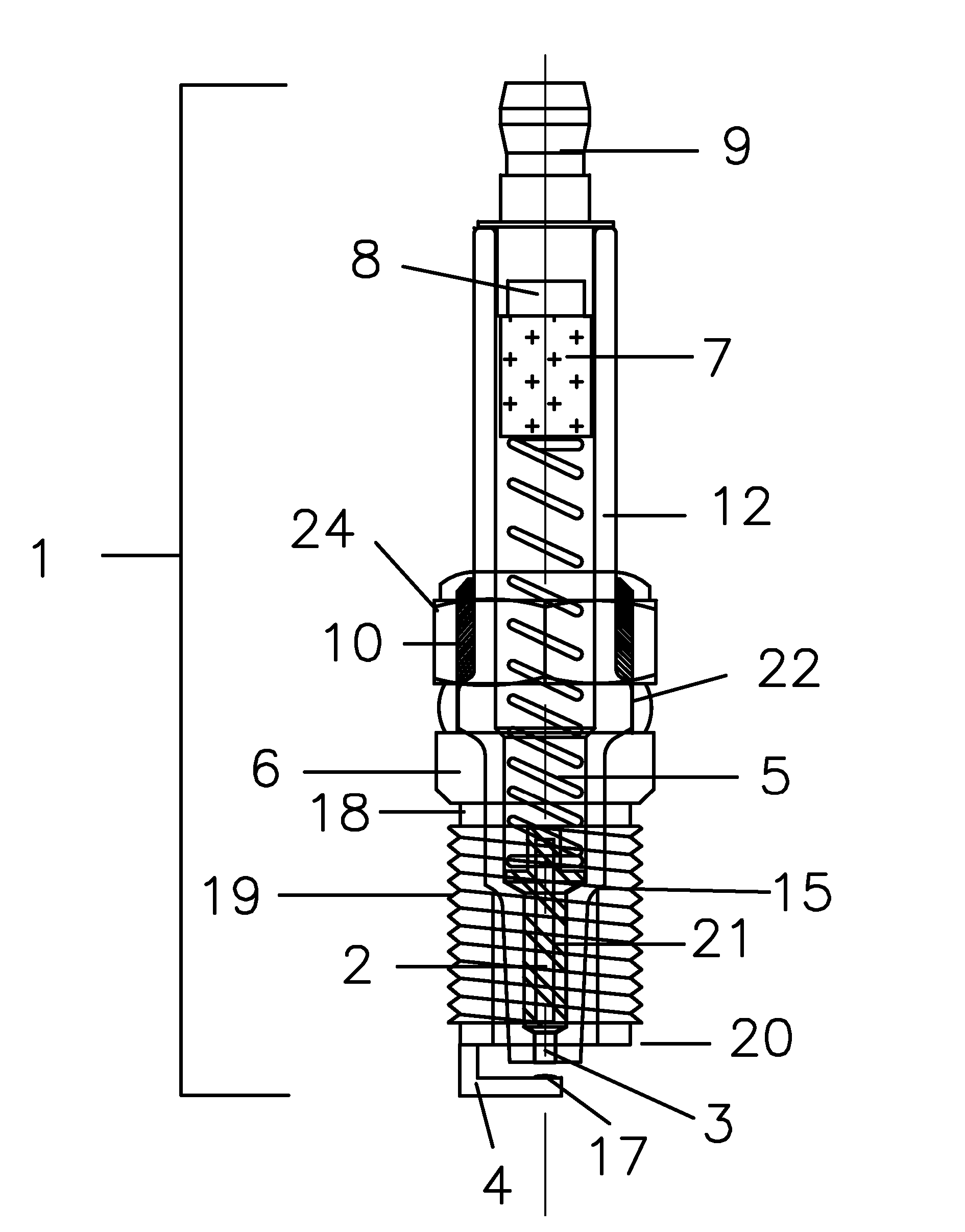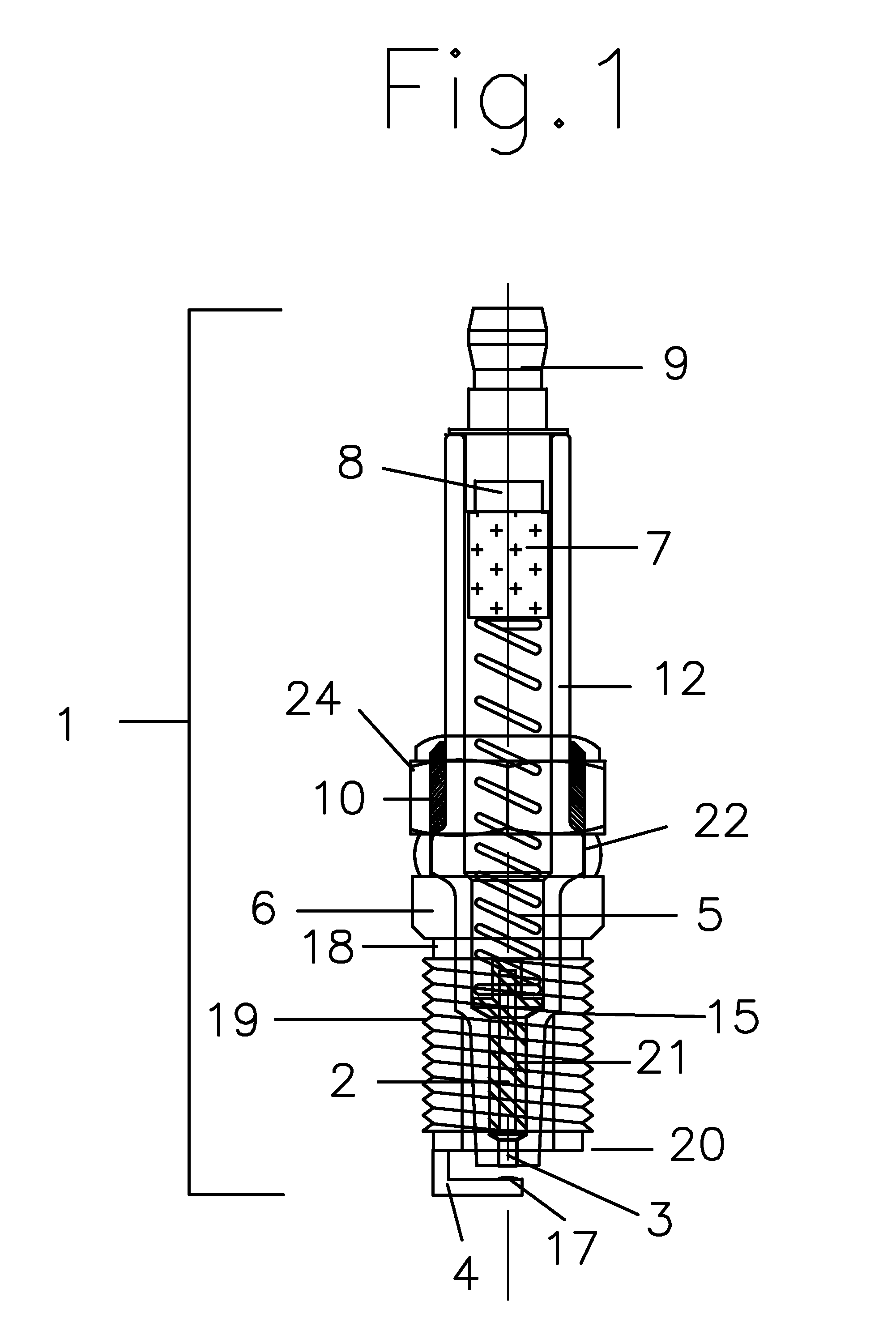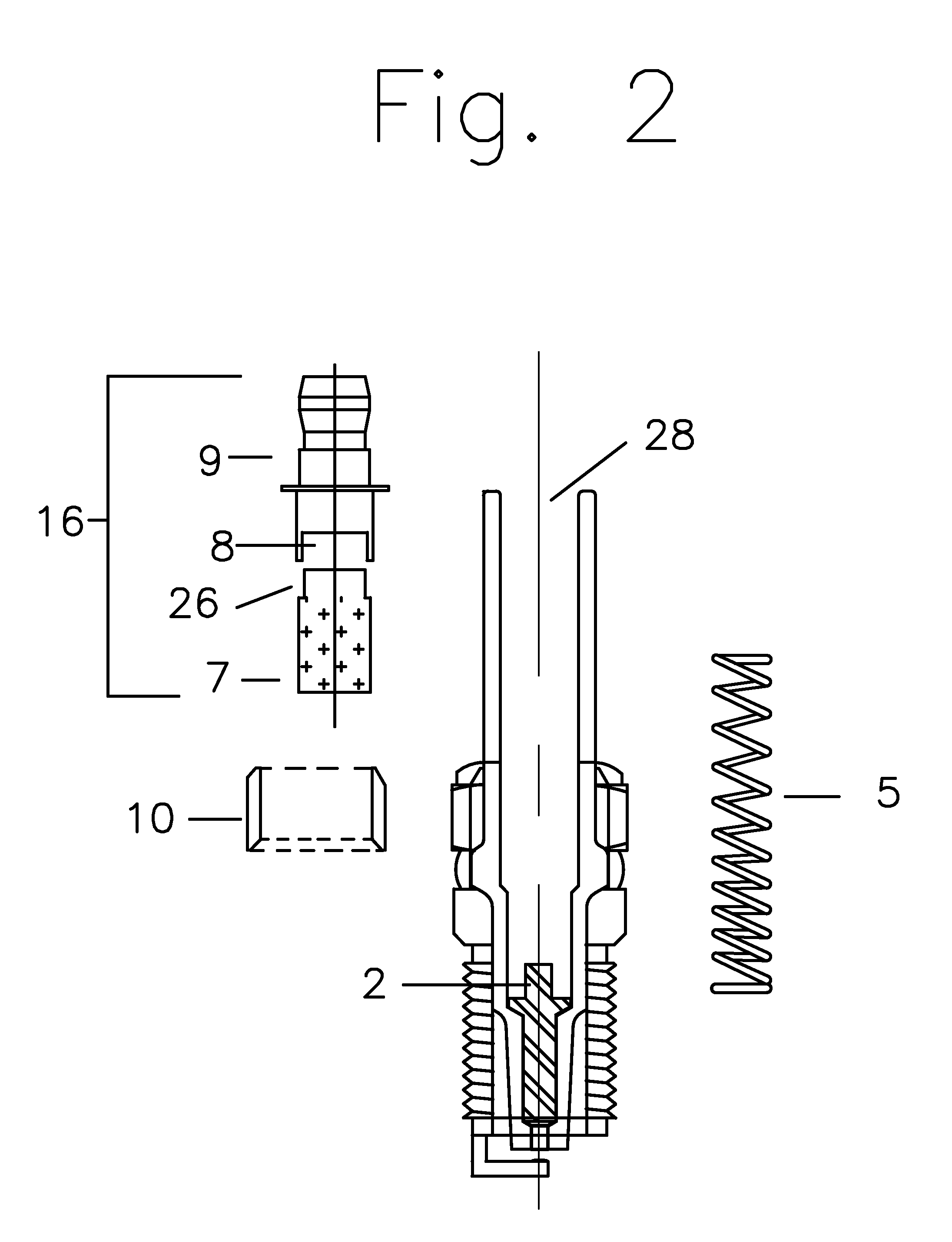High power discharge fuel ignitor
a fuel ignitor and high-power discharge technology, which is applied in the manufacture of sparking plugs, machines/engines, sparking plugs, etc., can solve the problems of high coulomb transfer of high-power discharge, inefficient design, and complex engine operation, and achieve the effect of effectively reducing electrode erosion and fine cross sectional electrodes
- Summary
- Abstract
- Description
- Claims
- Application Information
AI Technical Summary
Benefits of technology
Problems solved by technology
Method used
Image
Examples
Embodiment Construction
[0042] Referring now to the drawings, in particular FIG. 1, a spark ignited, internal combustion engine ignition device, spark plug, or ignitor in accordance with the present invention is shown generally as 1. The ignitor 1 consists of a metal casing or shell 6 having a cylindrical base 18, which may have external threads 19, formed thereon for threading into the cylinder head (not shown) of the spark ignited internal combustion engine. The cylindrical base 18, of the ignitor shell 6 has a generally flattened surface perpendicular to the axis of the ignitor 1 to which a ground electrode 4 is affixed by conventional welding or the like. In an embodiment of the invention, the ground electrode 4 has a rounded tip 17 extending therefrom and preferably formed from a rhenium / molybdenum sintered compound, which resists the erosion of the electrode due to high power discharge, as further disclosed herein.
[0043] Ignitor 1 further includes a hollow ceramic insulator 12 disposed concentricall...
PUM
 Login to View More
Login to View More Abstract
Description
Claims
Application Information
 Login to View More
Login to View More - R&D
- Intellectual Property
- Life Sciences
- Materials
- Tech Scout
- Unparalleled Data Quality
- Higher Quality Content
- 60% Fewer Hallucinations
Browse by: Latest US Patents, China's latest patents, Technical Efficacy Thesaurus, Application Domain, Technology Topic, Popular Technical Reports.
© 2025 PatSnap. All rights reserved.Legal|Privacy policy|Modern Slavery Act Transparency Statement|Sitemap|About US| Contact US: help@patsnap.com



